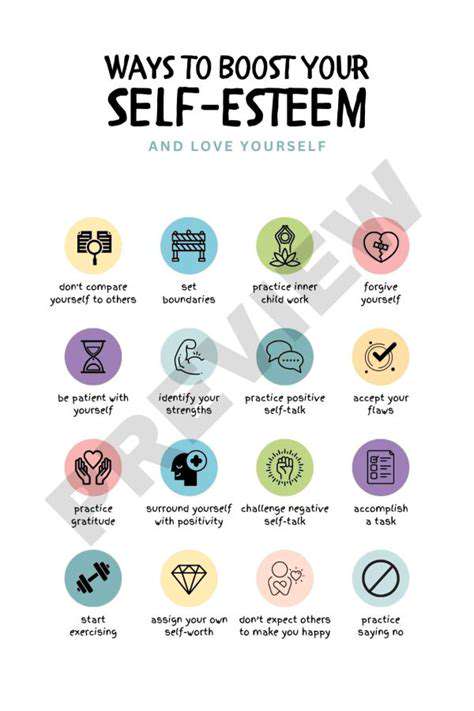Guide to Practicing Positive Affirmations

Tracking Progress and Adjusting Your Approach
Understanding Your Baseline
Before you can effectively track your progress, you need a clear understanding of where you currently stand. This involves honestly assessing your current mindset and behaviors related to positive affirmations. Are you already engaging in any positive self-talk? If so, what forms does it take? Are there any negative thought patterns or self-deprecating statements you frequently encounter? Recognizing these patterns, both positive and negative, is the first step toward setting realistic goals and measuring your success.
By identifying your starting point, you gain valuable insight into the areas where you need to focus your efforts. This initial assessment will provide a framework for measuring your growth and motivating you to continue on your journey toward positive affirmations.
Setting Measurable Goals
Simply wishing for positive change isn't enough. To effectively track progress, you need to set specific, measurable, achievable, relevant, and time-bound (SMART) goals. For example, instead of feel more confident, aim for practice positive self-talk three times a day for one week. This provides a clear target and a tangible way to gauge your advancement.
Make sure your goals align with your overall well-being and personal values. This ensures that your efforts are meaningful and sustainable in the long run. Remember, small, consistent steps are more effective than large, infrequent ones.
Tracking Your Daily Progress
Establishing a consistent journaling or log-keeping practice is crucial for tracking your progress. Note down instances of positive affirmations you used, any challenges you encountered, and how you responded to those challenges. This detailed record will help you identify patterns and pinpoint areas where you might need adjustments to your approach.
Regularly reviewing your progress logs will not only help you track your journey but also provide valuable insights into your emotional and mental growth. This continuous monitoring will provide a clearer picture of what's working and what needs improvement. Be honest with yourself, and don't be afraid to acknowledge setbacks; they are part of the learning process.
Recognizing and Addressing Setbacks
Setbacks are inevitable on any journey, and practicing positive affirmations is no exception. Don't let setbacks derail you. Instead, view them as opportunities for learning and growth. Analyze what caused the setback—was it external factors, or internal doubts?
If the setback was due to internal factors, explore the root cause. Did you encounter negative self-talk? If so, how can you counteract these thoughts with positive affirmations? By understanding the reasons behind setbacks, you can adjust your approach and move forward with renewed determination.
Adjusting Your Affirmation Techniques
If you find certain affirmations aren't resonating with you, don't be afraid to adjust your techniques. Experiment with different phrasing, delivery methods, or even the timing of your affirmations. Find what works best for you. This could involve incorporating visualization, writing, or even speaking your affirmations aloud. Different methods can yield different results, so be open to experimentation.
Evaluating Your Overall Approach
Regularly evaluate the effectiveness of your entire approach to positive affirmations. Are you seeing positive changes in your mindset and behaviors? If not, what aspects of your approach might need tweaking? Are you consistently practicing your affirmations, or are there gaps in your routine? Be honest with yourself and make necessary adjustments to your affirmation practice to maximize its impact.
Maintaining Motivation and Consistency
Maintaining motivation and consistency is paramount to long-term success in practicing positive affirmations. Celebrate your progress, no matter how small. Acknowledge your achievements and reward yourself for sticking to your routine. Remember that positive affirmations are a journey, not a destination. Be patient with yourself, and continue to nurture your positive mindset.
Read more about Guide to Practicing Positive Affirmations
Hot Recommendations
-
*Guide to Managing Gout Through Diet
-
*Best Habits for Financial Well being
-
*How to Build a Routine for Better Mental Health
-
*How to Eat Healthy on a Budget [Tips & Meal Ideas]
-
*Guide to Practicing Self Acceptance
-
*How to Incorporate More Movement Into Your Day
-
*Guide to Managing Chronic Pain Naturally
-
*Guide to Building a Reading Habit for Well being
-
*Top 5 Weight Loss Supplements That Actually Work
-
*Best Exercises for Postpartum Recovery [Beyond Abdominal Work]





![How to Train for a 5K Run [Plan Included]](/static/images/26/2025-07/NutritionandRecoveryStrategiesforOptimalPerformance.jpg)





